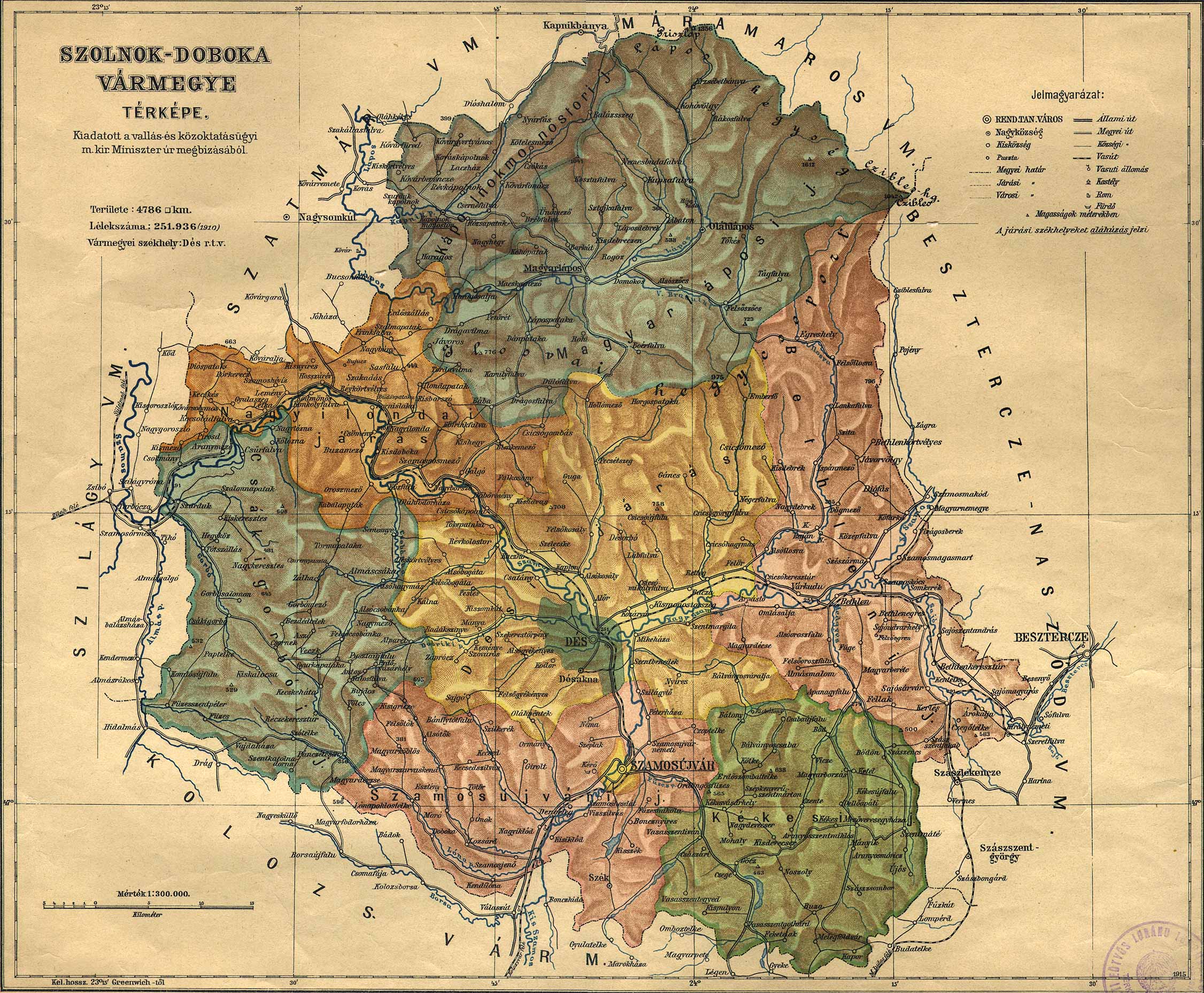Szolnok-Doboka on:
[Wikipedia]
[Google]
[Amazon]
Szolnok-Doboka was an administrative county (

 In the early 20th century, the subdivisions of Szolnok-Doboka county were:
In the early 20th century, the subdivisions of Szolnok-Doboka county were:
comitatus
''Comitatus'' was in ancient times the Latin term for an armed escort or retinue. The term is used especially in the context of Germanic warrior culture for a warband tied to a leader by an oath of fealty and describes the relations between a lo ...
) of the Kingdom of Hungary
The Kingdom of Hungary was a monarchy in Central Europe that existed for nearly a millennium, from the Middle Ages into the 20th century. The Principality of Hungary emerged as a Christian kingdom upon the coronation of the first king Stephe ...
. Its territory is now in northern Romania
Romania ( ; ro, România ) is a country located at the crossroads of Central, Eastern, and Southeastern Europe. It borders Bulgaria to the south, Ukraine to the north, Hungary to the west, Serbia to the southwest, Moldova to the east, a ...
(northern Transylvania
Transylvania ( ro, Ardeal or ; hu, Erdély; german: Siebenbürgen) is a historical and cultural region in Central Europe, encompassing central Romania. To the east and south its natural border is the Carpathian Mountains, and to the west the ...
). The capital of the county was Dés
Dej (; hu, Dés; german: Desch, Burglos; yi, דעעש ''Desh'') is a municipality in Transylvania, Romania, north of Cluj-Napoca, in Cluj County. It lies where the river Someșul Mic meets the river Someșul Mare. The city administers four ...
(now Dej, Romania).
Geography
Szolnok-Doboka county shared borders with the Hungarian counties Szilágy, Szatmár, Máramaros, Beszterce-Naszód and Kolozs. The river Someş flowed through the county. Its area was around 1910.History
Szolnok-Doboka county was formed in 1876, when Belső-Szolnok county (its center was Dés/ Dej), most of Doboka county (its center was Doboka/ Dăbâca at first, later Szamosújvár/Gherla
Gherla (; hu, Szamosújvár; german: Neuschloss) is a municipality in Cluj County, Romania (in the historical region of Transylvania). It is located from Cluj-Napoca on the river Someșul Mic, and has a population of 20,203. Three villages are ...
) and the eastern part of the Kővárvidék/ Chioar district were united.
In 1920, by the Treaty of Trianon
The Treaty of Trianon (french: Traité de Trianon, hu, Trianoni békeszerződés, it, Trattato del Trianon) was prepared at the Paris Peace Conference and was signed in the Grand Trianon château in Versailles on 4 June 1920. It formal ...
, the county became part of Romania, except from 1940 until the end of World War II
World War II or the Second World War, often abbreviated as WWII or WW2, was a world war that lasted from 1939 to 1945. It involved the World War II by country, vast majority of the world's countries—including all of the great power ...
, when it was returned to Hungary by the Second Vienna Award
The Second Vienna Award, also known as the Vienna Diktat, was the second of two territorial disputes that were arbitrated by Nazi Germany and Fascist Italy. On 30 August 1940, they assigned the territory of Northern Transylvania, including all o ...
, with a slightly modified territory. The territory of the county is now divided between the Romanian counties of Cluj
; hu, kincses város)
, official_name=Cluj-Napoca
, native_name=
, image_skyline=
, subdivision_type1 = County
, subdivision_name1 = Cluj County
, subdivision_type2 = Status
, subdivision_name2 = County seat
, settlement_type = City
, le ...
(the center and south, a.o. Dej), Maramureș
or Marmaroshchyna ( ro, Maramureș ; uk, Мармарощина, Marmaroshchyna; hu, Máramaros) is a geographical, historical and cultural region in northern Romania and western Ukraine. It is situated in the northeastern Carpathians, alon ...
(the north), Bistrița-Năsăud (the east) and Sălaj (the west).
Demographics

Subdivisions
 In the early 20th century, the subdivisions of Szolnok-Doboka county were:
In the early 20th century, the subdivisions of Szolnok-Doboka county were:
Notes
References
{{HUCountiesto1918 States and territories established in 1940 States and territories disestablished in 1920 States and territories disestablished in 1945 Kingdom of Hungary counties in Transylvania